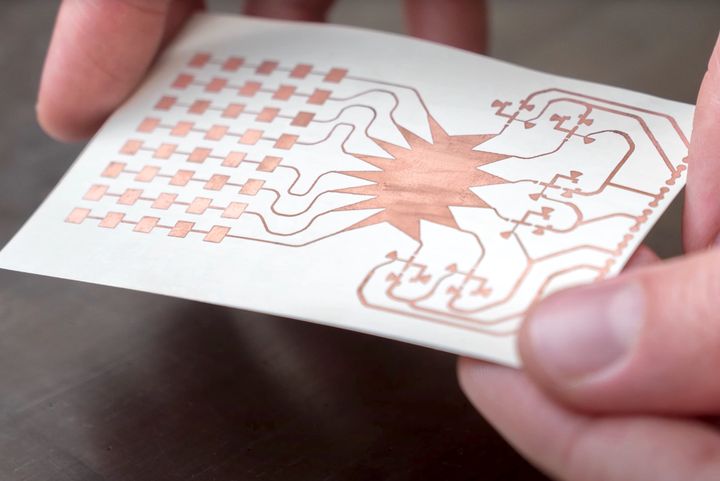
Researchers at the Georgia Institute of Technology have found a way to harvest free electrical power using 3D printing.
5G, the latest implementation of wireless network protocols, has obtained a lot of feedback in the public’s eye.
Perhaps: It’s (sometimes) a much faster network than 4G. Or: It’s blocked by some type of structures. Or: It’s evil and causes COVID-19. Or even: It’s a conspiracy by Bill Gates. Etc. Most of this is untrue and well beyond the scope of this post, but there’s one thing certain you can get from 5G: Electricity!
Wireless electricity has been a thing for a while: many people use wireless chargers for their smartphones, for example. But you’ll note in those configurations the source of the electricity (the charger) is literally touching the device. In a field environment where a wireless network is broadcasting, the power is dispersed the farther you get from the source, or base station.
Previous attempts at capturing wireless power from 4G networks have failed because there just isn’t enough energy to catch. However, with 5G there’s a subtle difference in the implementation.
It turns out that 5G protocol allows for a “focusing” of the wireless energy toward a connected device. This not only provides a signal boost for the device, but it also doesn’t waste power that’s otherwise sprayed everywhere. It’s analogous to trying to fill your cup with water from a faucet versus the front-yard sprinkler.
This quirk of 5G protocol gave the researchers the idea that they could in fact capture practical amounts of energy from the 5G network.
They designed a complex system for capturing this radiating energy that could be 3D printed. Georgia Tech explains:
“Operating just like an optical lens, the Rotman lens provides six fields of view simultaneously in a pattern shaped like a spider. Tuning the shape of the lens results in a structure with one angle of curvature on the beam-port side and another on the antenna side. This enables the structure to map a set of selected radiation directions to an associated set of beam-ports. The lens is then used as an intermediate component between the receiving antennas and the rectifiers for 5G energy harvesting.”
They say they were able to catch 21X as much power compared with previous attempts.
Please review this video from researchers Manos Tentzeris and Aline Eid:
This innovation is very interesting because it can enable many low-power IoT devices, like sensors, to operate without the need for batteries: they simply pick up necessary power from the air.
That allows for installation of sensors where batteries might not be practical, and eliminates the need for periodic maintenance to replace batteries.
This should reduce the need for batteries somewhat, as the future will surely involve massive numbers of IoT devices everywhere. Imagine installing millions of them without the need to create the corresponding batteries.
This is but one of many future antennae applications that will be enabled by 3D printing tech: it can create geometries that are not easily made with other technologies. The unusual shapes of these antennae can be optimized for many different applications and frequencies.
I believe the field of antenna design is going to undergo a revolution in the next few years.
Via Georgia Tech
